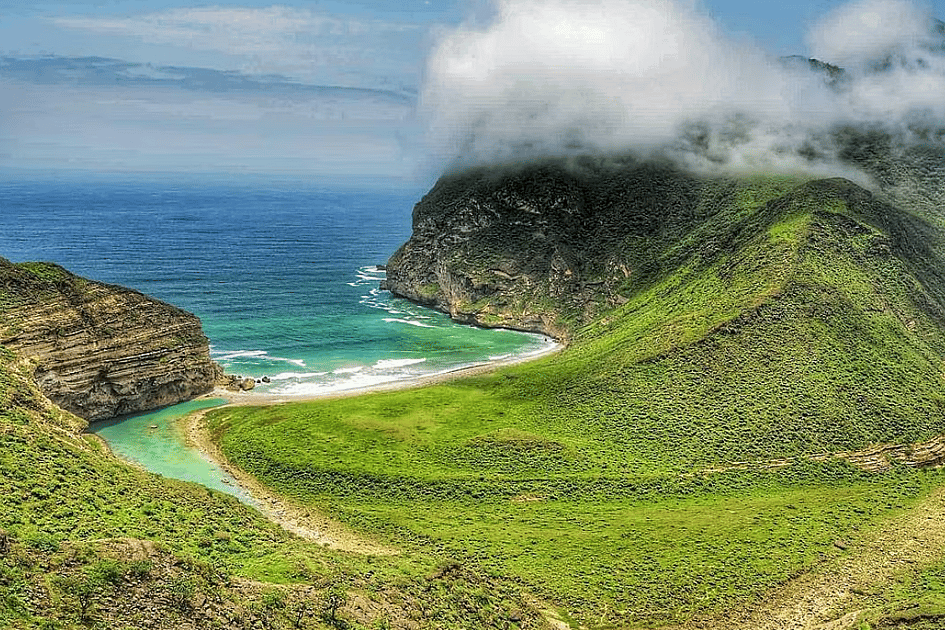Tips & Advices
Food and Water Precautions for Travelers | Yellow Book

Introduction
Contaminated food and water pose an infectious disease risk to travelers due to the numerous pathogens and toxins that can be transmitted. Additional information on pathogens and toxins associated with travelers’ diarrhea and treatment options can be found in the Travelers’ Diarrhea and Post-Travel Diarrhea chapters.
Food
Travelers should select food with care. While abroad, travelers should follow food safety practices recommended in the United States. Raw food, including unpasteurized dairy products, is especially likely to be contaminated. Raw or undercooked meat, fish, shellfish, eggs, and produce can be contaminated with pathogens, and some fish harvested from tropical waters can transmit toxins that survive cooking.
In areas where hygiene and sanitation are inadequate or unknown, travelers should take additional food safety precautions, as described in Box 1.7.1.
Box 1.7.1: Safe food practices for travelers in areas with inadequate or unknown hygiene and sanitation
In restaurants, inadequate refrigeration and lack of food safety training among staff can result in transmission of pathogens or their toxins. Consumption of food and beverages obtained from street vendors increases the risk of illness. In general, fully cooked foods that are served hot and foods that travelers carefully prepare themselves are safest.
Travelers should exercise the same caution about food and water served on flights as they do for restaurants. Additionally, travelers should not bring perishable food back to their home country without refrigeration. Travelers can use insulated packaging and materials, such as frozen gel packs, to keep perishable food cold in transit. Perishable food should arrive at least as cold as it would be in a refrigerator (4°C [40°F] or below) and should not sit at room temperature for more than 2 hours. Travelers are prohibited from bringing some food items into the United States from abroad; refer to the United States Department of Agriculture’s Animal and Plant Health Inspection Service guide for travelers for more information.
Feeding infants
Breastfeeding
For infants ages <6 months, the safest way to feed is to breastfeed exclusively. Practicing careful hygiene when using a breast pump and washing pump parts using a safe source of water can reduce the risk of getting pathogens into the milk. For details, see How to Keep Your Breast Pump Kit Clean: The Essentials.
Formula
For infants who are formula-fed, parents should consider using liquid, ready-to-feed formula that is sterile. When preparing formula from commercial powder, mixing it with a safe source of water following the manufacturer’s instructions usually is sufficient. Although no powdered formula is sterile, travelers should consider packing enough for their trip because manufacturing standards vary widely around the world.
For infants ages <3 months and those with weakened immune systems, formula safety can be increased by reconstituting powder using hot water (≥70°C [≥158°F]). Boil water and wait about 5 minutes before mixing with formula powder; after mixing, wait for the prepared formula to cool before feeding the baby. Prepared formula should be used within 2 hours of preparation or refrigerated for a maximum of 24 hours. After feeding, any remaining liquid or prepared formula should be discarded. Once opened, formula containers should be stored in a cool, dry place with the lid tightly closed and used within 1 month.
For more on infant feeding hygiene:
Water
Swallowing, having contact with, or inhaling aerosols of contaminated water can transmit pathogens that cause diarrhea, vomiting, or ear, eye, skin, respiratory, or nervous system infections. Travelers should follow safe water practices recommended in the United States while abroad.
Drinking water and other beverages
In many parts of the world, particularly where water treatment, sanitation, and hygiene are inadequate, tap water can contain disease-causing agents, including bacteria, viruses, parasites, and chemical contaminants. Consequently, tap water might be unsafe for drinking, preparing food and beverages, making ice, cooking, and brushing teeth. Infants, young children, pregnant women, older people, and immunocompromised people (e.g., persons with HIV, on chemotherapy, or who take certain immune-suppressing medications) might be especially susceptible to illness.
Travelers should avoid drinking or putting tap water into their mouths unless they are reasonably certain the water is safe. Similarly, travelers should avoid ice unless they are reasonably certain it was made using safe water. Box 1.7.2 provides tips and recommendations of other safe water and beverage practices for travelers.
Box 1.7.2
Recreational water
Pathogens that cause gastrointestinal, respiratory, skin, ear, eye, and neurologic illnesses can be transmitted via contaminated recreational freshwater or marine water. Water from inadequately treated pools, hot tubs, or splash pads can also be contaminated. Recreational water contaminated by human or animal feces, sewage, or wastewater runoff can appear clear but still contain disease-causing infectious or chemical agents. Ingesting even small amounts of such water can cause illness. Infectious pathogens (e.g., Cryptosporidium) can survive for days, even in properly operated pools, splash pads, and hot tubs.
To protect themselves and other people, travelers should take health and safety precautions before, during, and after entering recreational water, as described in Box 1.7.3. Additional guidance can be found on CDC’s Healthy Swimming website.
Box 1.7.3: Healthy swimming for travelers
| Do not | Enter recreational water if you have diarrhea. |
|---|---|
| Enter pools, splash pads, and hot tubs with improper chlorine or bromine levels, with improper pH, with cloudy water, with loose or broken drain covers, or without a lifeguard and safety equipment (e.g., rescue pole or ring). | |
| Swim or wade near storm drains, in lakes or rivers after heavy rainfall, or in water that smells bad, looks discolored, or has algal mats, foam, or scum on the surface. | |
| Enter freshwater streams, canals, or lakes in schistosomiasis-endemic areas of Africa, Asia, the Caribbean, and South America (see Schistosomiasis chapter). | |
| Avoid | Entering hot tubs if you are at increased risk for legionellosis (e.g., people ages ≥50 years, those with weakened immune systems). |
| Entering recreational water if you have open wounds. If an existing wound (e.g., from a recent surgery, piercing, or tattoo) or wound sustained while swimming comes into contact with untreated recreational water, it should be washed thoroughly with soap and water to reduce the chance of infection. Cover wounds completely with a waterproof bandage if there is a chance it could come in contact with recreational water. | |
| Do | A self-inspection of the recreational water venue for health and safety information. Consider using test strips to make sure the water has a proper free chlorine or bromine level and pH. |
| Wear a nose clip, hold your nose shut, and avoid jumping or diving into warm freshwater to help prevent water from going up your nose. |
Maintaining proper pH and chlorine or bromine concentration is necessary for preventing transmission of most infectious pathogens in pools, splash pads, and hot tubs. If travelers would like to test recreational water before use, the CDC recommends a free chlorine concentration of 3–10 parts per million (ppm) in hot tubs (or 4–8 ppm total bromine) and 1–10 ppm free chlorine in pools and splash pads (2–10 ppm for those using chlorine stabilizer, such as cyanuric acid). Travelers can purchase test strips at most large retail companies, hardware stores, or pool supply stores. When hot tubs are not properly operated and chlorine or bromine concentrations are not adequately maintained, pathogens such as Pseudomonas, which can cause “hot tub rash” or otitis externa, and Legionella, which can cause life-threatening pneumonia, can multiply.
In freshwater recreational areas, there are many naturally occurring pathogens that can cause disease. Naegleria fowleri is a parasite found around the world in warm freshwater, including lakes, rivers, ponds, hot springs, and locations with water warmed by discharge from power plants and industrial complexes. Naegleria fowleri has also been found in inadequately chlorinated water, including in pools, splash pads, and a surf venue. People become infected when water containing Naegleria fowleri goes up their nose, usually while swimming. Healthcare professionals should also inform travelers that Naegleria fowleri infection has been linked to use of contaminated tap water for sinus or nasal irrigation. Even though Naegleria fowleri infection is rare, it is almost always fatal.
In seawater or brackish water, pathogens such as Leptospira and Vibrio vulnificus can infect people through open wounds, potentially causing serious and life-threatening disease. People with underlying health conditions, such as liver disease, cancer, diabetes, and immunocompromising conditions, are at higher risk of V. vulnificus wound infection.
Handwashing
Travelers should follow recommended handwashing practices by washing their hands with soap and water before preparing or eating food, after using the bathroom or changing diapers, before and after caring for someone who is ill, and after contact with animals or animal environments. When soap and water are not available, travelers should use an alcohol-based hand sanitizer containing ≥60% alcohol and then wash hands with soap and water when possible. Hand sanitizer is not as effective as handwashing for removing some pathogens, like Cryptosporidium or norovirus, and does not work well when hands are visibly dirty or greasy.
Tips & Advices
Why Travel Insurance Can Be a Lifesaver for Your Trip, Find out now

Monday, July 21, 2025
Whether you’re embarking on a short weekend away or a lengthy journey across continents, travel insurance remains one of the most vital components of your travel preparations. Unexpected circumstances can quickly turn your perfect trip into an expensive ordeal, and the right insurance coverage can safeguard you against significant financial burdens.
What Exactly Does Travel Insurance Include?
A comprehensive travel insurance plan typically includes protection against:
- Trip cancellations and interruptions
- Flight or transport delays
- Lost, stolen, or delayed luggage
- Stolen cash, credit cards, passports, or other vital documents
- Medical emergencies, hospitalization, and repatriation expenses
Government guidelines across Ireland and the UK strongly recommend comprehensive travel insurance due to the potential high costs of medical care abroad. According to official government resources, the costs associated with emergency medical treatment or repatriation can be extraordinarily high, often amounting to thousands of euros.
Importance of Medical Coverage
Medical coverage is particularly crucial. Accidents or illnesses abroad are unpredictable and costly. Ireland’s official guidance underscores that hospital treatments or emergency flights back home can be extremely expensive without proper insurance. Even a simple travel insurance policy can ensure you’re not left with overwhelming bills and additional stress during an already difficult time.
Types of Travel Insurance Policies Available
Different travel needs require different insurance solutions. Here are the primary policy types to consider:
- Single-trip Policies: Ideal for occasional travelers planning one-off trips.
- Annual Multi-trip Policies: Beneficial for frequent travelers, offering year-round coverage.
- Specialist Insurance Plans: Tailored for specific traveler groups such as families, senior citizens, students studying abroad, and group travelers.
Official advice highlights matching your insurance coverage with your specific travel habits and personal circumstances to ensure maximum benefit and efficiency.
Cost Considerations
Travel insurance costs vary depending on factors like your destination, length of stay, age, and activities planned. According to governmental consumer protection resources, travelers should shop around to obtain the best policy at a fair price:
- Basic European Single-trip Coverage: Approximately €22, suitable for short trips.
- Enhanced Coverage: Includes additional protections such as cancellations, luggage coverage, and up to €5 million in medical benefits, typically costing around €42.
- Annual Multi-trip Coverage: Generally starts at about €80 for Europe and upwards of €120 for global coverage.
It’s important to remember that lower-priced policies typically feature higher deductibles and fewer inclusions.
Additional Cover for Adventure Activities
Standard travel insurance usually excludes high-risk sports or adventure activities. Official Irish and UK government travel advisories clearly indicate the necessity of additional insurance for activities like skiing, scuba diving, skydiving, paragliding, or mountain climbing. Always confirm coverage specifics and add additional adventure sports coverage if needed.
Coverage for Extraordinary Situations
Common events such as extreme weather, natural disasters, strikes, and civil disturbances are typically not covered by standard travel insurance policies. Irish and UK governmental consumer advisories suggest adding specialized disruption coverage to protect yourself fully against these scenarios.
European Health Insurance Card (EHIC) – Important but Limited
Travelers within the EU should carry their European Health Insurance Card (EHIC), offering access to essential healthcare at reduced costs or sometimes free within public facilities. However, government websites clearly emphasize that the EHIC does not cover costs such as private medical care, repatriation flights, lost baggage, or stolen belongings. Therefore, comprehensive travel insurance remains essential.
Essential Tips Before Purchasing Your Policy
- Obtain your insurance immediately upon booking your travel to activate trip cancellation benefits.
- Always disclose existing medical conditions to avoid coverage disputes.
- Determine whether specific destinations or activities require extra coverage.
- Consider adding excess waivers if you wish to avoid out-of-pocket expenses for minor claims.
- Frequent travelers should evaluate annual multi-trip coverage for better overall value.
- Always read policy documents carefully to understand exactly what’s included.
Final Thoughts
Travel insurance is more than merely optional; it’s the responsible thing to do when you’re planning to travel. Good coverage can protect you against expensive surprises and provide crucial assistance in an emergency while you are overseas. The combination of EHIC and a good travel insurance policy is considered by UK government authorities as the ideal approach to SAFE Guarding your travels.
Tips & Advices
Now, India Joins Canada, UK, Australia, UAE, Singapore, and USA To Embrace CyberSafe Travel Era as TripJack and BOXX Launch Digital Tourism Security Solution, Here’s More

Sunday, July 20, 2025
When travelers from busy hubs like Mumbai, Delhi or Bengaluru are planning their next trip, they often overlook the unseen threats lying in wait online. And yet in a time when we board planes, show passports, make hotel reservations, and consummate credit card purchases on our smartphones, it is now as critical to our physical safety that we be safe from predators in the digital sphere. So for the first time, TripJack, India’s largest B2B travel platform, has collaborated with global specialist BOXX Insurance to launch CyberSafe – a revolutionary cyber defense suite to protect travelers against digital crime. Not only does this drive establish India as a progressive tourism market, but also raises the bar for travel safety globally.
Add Digital Security To Your List Of Travel Essentials
India’s tourism sector has seen spectacular growth in recent years with governments pushing for Safe and Honourable Tourism guidelines to safeguard visitors and locals. Historically, the datum for attention would be on public health, on crime prevention, on physical infrastructure. What’s been lacking until now is a comprehensive approach to protecting against digital exploitation — including identity theft, financial fraud and phishing scams — especially for travelers.
CyberSafe fills that gap. It offers real-time identity monitoring, dark web alerts, access to Wi‑Fi advocacy specialists, restoration support, and resources that help educate travelers about threats before they escalate to incidents. In essence, CyberSafe is a “digital first aid kit” for travelers, that could help lessen the emotional and financial cost of cybercrime while overseas.
Facing an Escalating Digital Threat
According to studies, 35% of Indian travelers have been a victim of a cybercrime while overseas, and internationally more than a quarter of all international travelers are affected by a cybercrime during their trips. Those numbers reflect the changing nature of travel — routine activities like sending money, looking up personal facts or booking a tour can pose risks to the traveler.
TripJack now delivers digital defenses to its traveling customers with the help of BOXX Insurance, a European and North American insurer that specializes in cyber-incident response for business travelers. This step places the Indian travel ecosystem right at the top of integrated travel protection: a combination of flight and health insurance coupled with digital trust.
Strengthening India’s Travel Framework
The Indian government(Ministry of Tourism) focuses on the safety of travellers and consumer rights. CyberSafe is in line with these strategic efforts, providing an extra dimension of safety within the framework of e-tourism. This partnership also contributes to the observance of legislations that encourages information exchange, emergency response, and ICT security such as the Safe and Honourable Tourism Code of Conduct.
At the same time, the nut on the job done by cyber security agencies including CERT-In (Computer Emergency Response Team India) to secure the national digital infrastructures has been tightened. With a traveler-centric service like CyberSafe, national capability is translated into personal confidence: cyber protection you can take with you, and take to the bank.
CyberSafe: What It Means for Travelers, and Industry
For travelers, specifically holiday-makers in places such as Phuket, Maldives, Dubai, or Barcelona, CyberSafe provides that peace of mind by completing the digital chain – when they first come until after they leave. For travel agents and service providers, it becomes a powerful differentiator — a way to demonstrate they really care for travelers well-being rather than just the journey itself.
With more than 72,000 travel agents on their platform, TripJack in India will now provide CyberSafe in their bundled travel deals. This would enable agents in Tier 2, Tier 3 and metro cities to offer a superior customer experience while safeguarding confidential information and digital assets.
Enhancing Tourism Brand and Trust
In global tourism, in which a destination’s reputation and a traveler’s confidence are inextricable, India’s action sends a clear signal: The country is in the business of not only hospitality but also comprehensive care. Securing borders is a matter of national ambition now on land, in the air and at sea —& this day & age, digitally.
With India pushing for a better ranking in global tourism stats and more business travelers and digital nomads making their way here, having CyberSafe as part of the travel checklist improves both the public perception and competitive edge.
A New Era of Foreign Travel Security
This is more than a stand-alone product, it is part of a broader transformation in travel policy and practice. Canada, the UK, Australia and members of the EU are all coming to expect citizens to guard not only their own health but also data while traveling. India’s CyberSafe campaign dovetails nicely with these current global standards.
As governments prioritize keeping citizens safe when they are outside the country (and safe can mean protection not just from physical harm, but also from cyber injury), travel safety now encompasses ALL risk factors. This is consistent resourcing with best practice consumer protection and digital stewardship globally.
Conclusion: Digital Care and Travel Culture
Travel has always been about more than luggage weights — it’s about curiosity, resilience and trust. Now a traveler’s safety can hinge on invisible digital defenders. CyberSafe acknowledges that fact and provides essential tools for travelers to concentrate on discovery, rather than exposure.
By incorporating digital safety into tourism, TripJack and BOXX are illuminating a new kind of care — one that protects passports and phone data plastered together. This is where tourism intersects with technology and trust blooms. And within that is true freedom for travelers.
Tags: asia-pacific, Australia, Bengaluru, BOXX Insurance cybersecurity travel, Canada, CyberSafe TripJack, Delhi, digital safety tourism, Dubai, global tourism, India, India travel cyber protection, london, mumbai, New York, north america, Singapore, south asia, southeast asia, sydney, Toronto, travel insurance India 2025, UAE, UK, United Arab Emirates, United Kingdom, United States, usa
Tips & Advices
Khareef season: Omani authorities issue safety tips for travelling to Dhofar after crash

In the midst of Salalah’s Khareef season, many UAE residents drive to Oman to experience the lush green landscape as the monsoon rain touches the land.
While the rains bring cooler temperatures and helps create unforgettable moments, it can also bring about safety hazards, particularly near water bodies. Stressing the need to exercise caution, Omani police shared safety tips for those travelling to Dhofar:
Stay up to date with the latest news. Follow KT on WhatsApp Channels.
-
Do not park your vehicle in unsafe places, such as near slopes. This puts your life and the lives of others at risk. Be responsible and stay away from dangerous locations.
-
Never leave children unattended near ponds and bodies of water, as even a moment of inattention can cost you
-
Keep the vehicles clean, and avoid dirty cars. Do not obscure the plate number, as owners can be held legally accountable for this
-
Passengers must not lean out of the window or roof of the car while driving recklessly; this can also expose you to legal accountability.
In a tragic accident in early July, a multi-vehicle collision in Dhofar killed 5 people, including two Omanis and three Emiratis who were from the same family. The crash injured eleven others, including two Omanis and nine Emirati citizens of which five are children.
The Emirati family members who died in the crash are a couple, and the wife’s mother. The couple’s eight-month-old daughter was hospitalised in Oman.
The family had travelled to Salalah for a summer break, but the tragic accident occurred just 12 hours after they left the UAE.
After the collision, UAE travellers spoke to Khaleej Times, sharing precautions to take while planning the journey, such as ensuring the vehicle is in good condition.
They also shared safety advice for driving through the tricky terrain, such as checking fuel levels, and driving at a speed lower than the speed limit in some areas.
-

 AI in Travel18 hours ago
AI in Travel18 hours agoAI Travel Revolution: Must-Have Guide to the Best Experience
-

 Brand Stories1 week ago
Brand Stories1 week agoHow Elon Musk’s rogue Grok chatbot became a cautionary AI tale
-

 Brand Stories2 weeks ago
Brand Stories2 weeks agoVoice AI Startup ElevenLabs Plans to Add Hubs Around the World
-

 Asia Travel Pulse2 weeks ago
Asia Travel Pulse2 weeks agoLooking For Adventure In Asia? Here Are 7 Epic Destinations You Need To Experience At Least Once – Zee News
-

 AI in Travel2 weeks ago
AI in Travel2 weeks ago‘Will AI take my job?’ A trip to a Beijing fortune-telling bar to see what lies ahead | China
-

 Brand Stories2 weeks ago
Brand Stories2 weeks agoChatGPT — the last of the great romantics
-

 Destinations & Things To Do18 hours ago
Destinations & Things To Do18 hours agoUntouched Destinations: Stunning Hidden Gems You Must Visit
-

 The Travel Revolution of Our Era1 month ago
The Travel Revolution of Our Era1 month agoCheQin.ai Redefines Hotel Booking with Zero-Commission Model
-

 Brand Stories2 weeks ago
Brand Stories2 weeks agoHumans must remain at the heart of the AI story
-

 Brand Stories2 weeks ago
Brand Stories2 weeks agoChildproofing the internet is a bad idea
